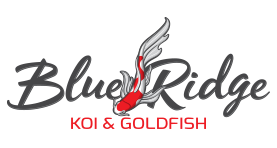Key Guidelines For Stocking Your Pond
- Stock your pond based on the expected full-grown size of your Koi, not the size at purchase.
- Aim for 200-250 gallons of water in your pond per adult Koi.
- Ensure your filtration and aeration systems are equipped for the water volume and number of Koi in your pond. If not, upgrade your equipment.
- Don’t add too many Koi at once. Stock your pond gradually to give both the fish and your pond’s ecosystem time to adjust.
Stocking your pond with Koi is one of the most exciting aspects of pond ownership, but adding too many can quickly create health risks for your fish and lead to water quality issues. Understanding the right stocking level helps ensure your Koi have enough space, oxygen, and clean water to thrive.
Dangers of Overstocking
Everyone likes their space, and Koi are no different. Overstocking a Koi pond can quickly upset the entire ecosystem’s balance. More fish means more waste, which raises ammonia and nitrite levels and can overwhelm even the best filtration systems. High waste levels not only degrade water quality but also reduce the amount of dissolved oxygen, especially during warm weather. In crowded conditions, Koi become stressed and more susceptible to disease, parasites, and injuries from bumping into each other. Over time, overstocking can stunt growth, shorten lifespans, and lead to chronic health issues.
Stocking Basics
Many pond owners start with the standard rule of thumb: one inch of fish per 10 gallons of water. While this can work for small goldfish, it’s far too simplistic for Koi, which can grow to 24 inches or more. Instead, think about your pond’s capacity in relation to the adult size of your fish—not their current size.
A good starting point is 200-250 gallons of water per fish. For example, a 1,000-gallon pond should ideally house a maximum of five adult Koi. This guideline helps maintain stable water parameters, allowing your fish to grow without overcrowding.
Aeration and Filtration
Ensuring your filtration and aeration systems match your pond’s Koi load is crucial for maintaining stable water quality and healthy oxygen levels. Since Koi produce significantly more waste than other pond fish, start by choosing a filter rated for at least 1.5-2 times your pond’s total volume. A high-quality mechanical filter removes solid debris before it breaks down, while a biological filter processes ammonia and nitrites into less harmful nitrates. Your biological filtration media should provide ample surface area for beneficial bacteria, and the flow rate of your pump should cycle the entire pond volume at least once every hour.
For aeration, aim to maintain dissolved oxygen levels at a minimum of 7 ppm, especially during warm months when oxygen levels naturally decrease. Adding air pumps with diffusers, air stones, waterfalls, or fountains to your pond is an effective way to increase oxygen levels. If your pond is heavily stocked, consider installing a dedicated aeration system rather than relying solely on water features. Regularly check water parameters, and upgrade equipment if levels drop or waste builds faster than your system can handle.
Download PDF

Comments are closed.